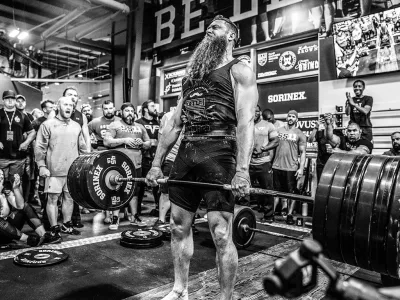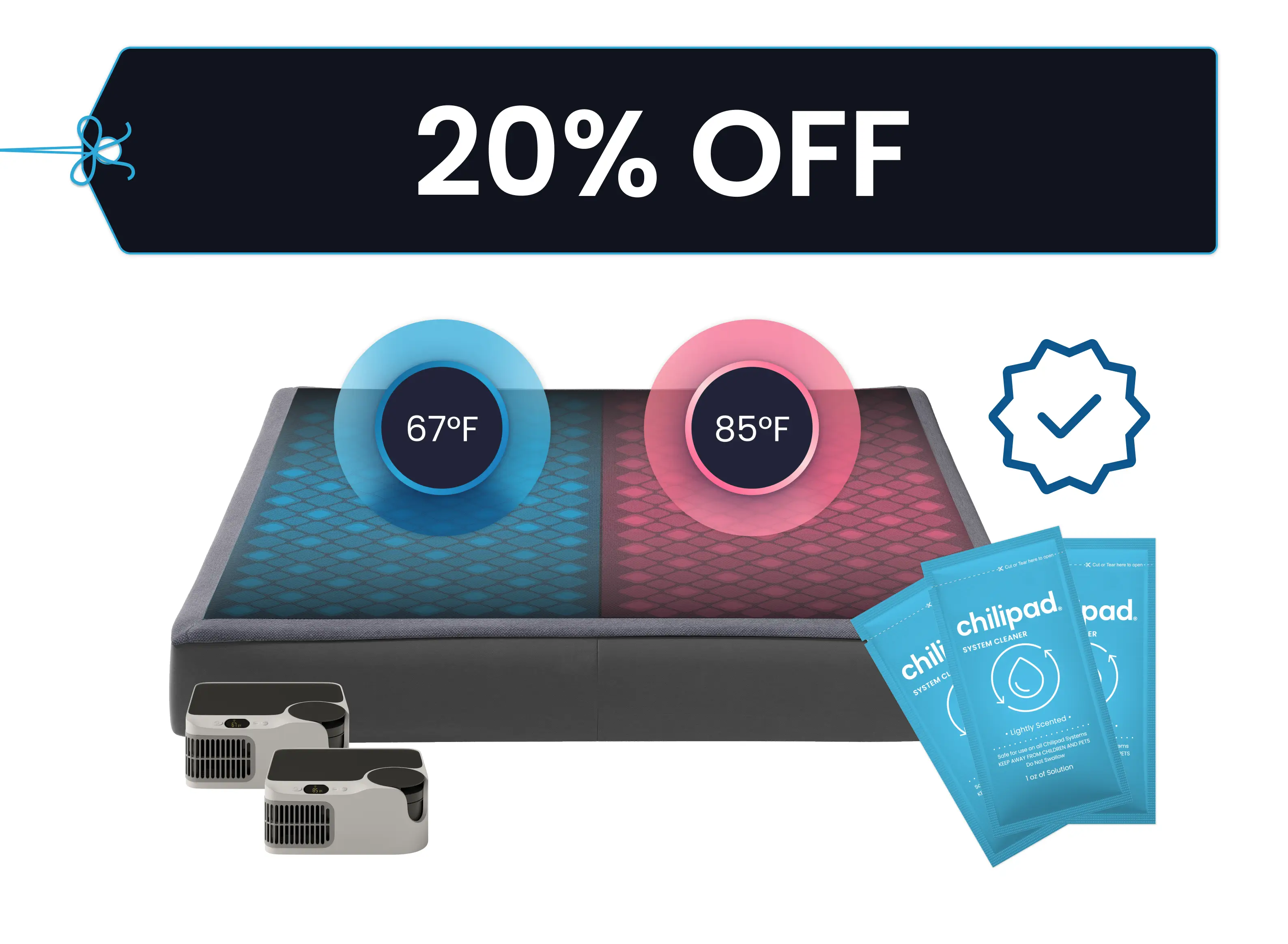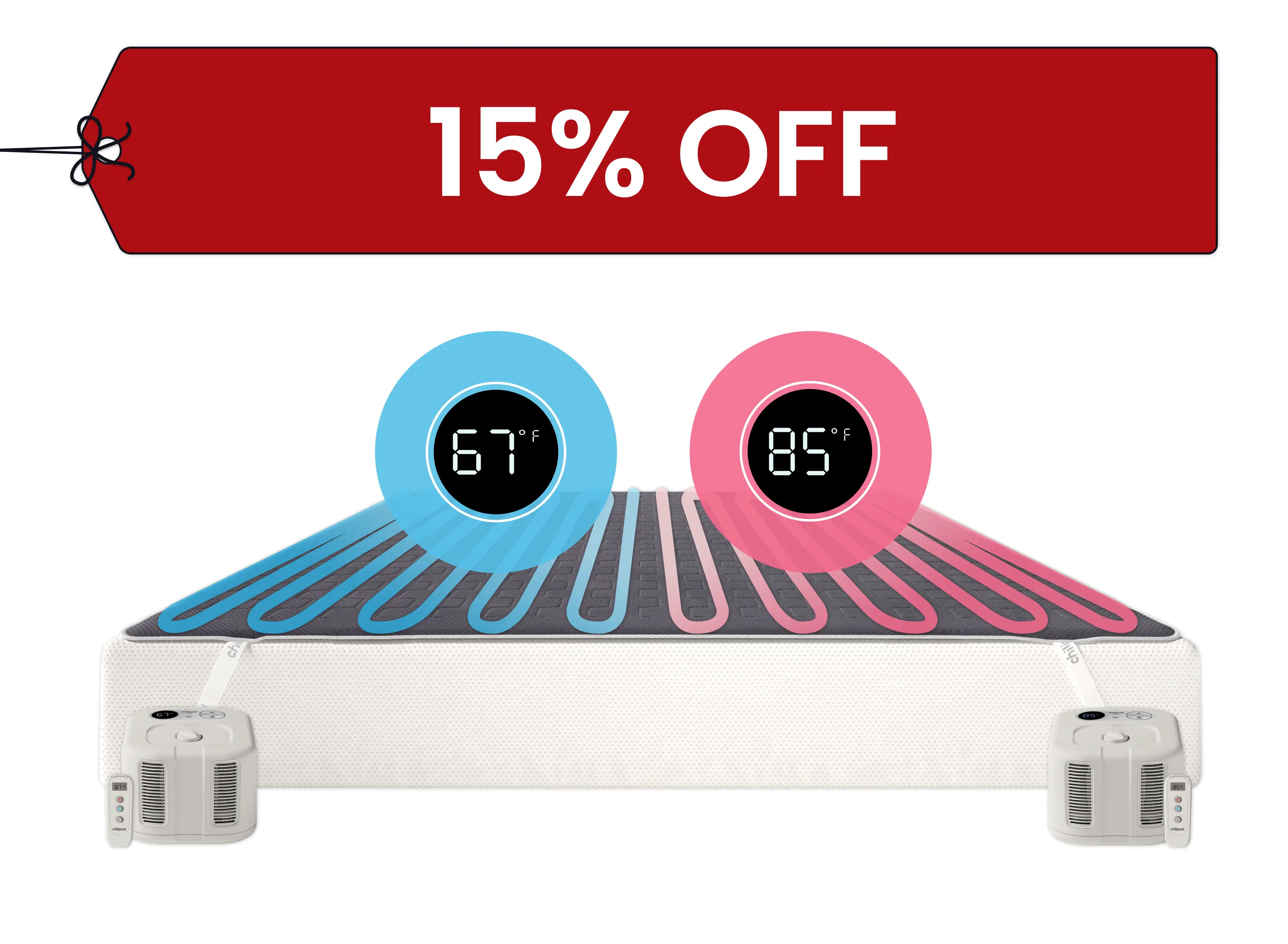Active Recovery Techniques for High-Performance Athletes
Chilipad Editorial Team • May 06, 2025

The Rest Factor: Episode Six with Bert Sorin
You can also listen to the full podcast episode with Bert Sorin.
Key Takeaways
- Active Recovery: Gentle movement like yoga, stretching, or light cardio helps athletes bounce back faster than complete rest.
- Circulation Boost: Techniques that get blood flowing aid in muscle repair and reduce soreness.
- Sleep Factor: Quality rest remains the most effective recovery tool, supporting both body and mind.
- Pro Recovery Tools: Methods like contrast baths, massage, and cooling sleep systems can speed up recovery and improve performance.
- Consistency Wins: Making recovery part of the daily routine keeps athletes stronger, healthier, and ready for the next challenge.
Active recovery is no longer an afterthought in athletic training—it’s a foundational pillar for peak performance. As a growing body of science and elite competitor experience confirms, intentional recovery strategies like hydrotherapy, cryotherapy, mobility work, and optimized sleep routines are helping athletes accelerate muscle repair, enhance mental clarity, and extend their physical prime.
High-performing athletes and coaches recognize this vital truth: performance doesn’t happen during the workout—it happens between them.
This article unpacks the best active recovery techniques for high-performance athletes. We’ll explore science-backed methods, practical tools, and cutting-edge trends so you can build a recovery blueprint that drives sustainable excellence. You can also visit Bert Sorin’s site. He’s the president and co-owner of Sorinex. Here is more of his story and insights.
What Is Active Recovery and Why Does It Matter?
Active recovery refers to performing low-intensity physical activity after intense exercise to stimulate oxygen-rich blood flow and support repair without adding additional strain.
Unlike passive recovery (e.g., lying on the couch), active methods such as walking, swimming, or yoga keep your system engaged without impeding recovery.
How Does Active Recovery Accelerate Muscle Recovery?
By increasing circulation and nutrient delivery, active recovery helps clear waste byproducts like lactate, which contributes to soreness and fatigue. For athletes recovering from high-stress sessions, this means faster regeneration and improved performance in subsequent workouts.
Active recovery also reduces muscular stiffness, promotes joint health, and fosters mobility—all crucial for enduring physical resilience.
Key Recovery Strategies for Athletes
Modern recovery isn’t one-size-fits-all. Here are several proven recovery strategies athletes are using to level up their performance:
1. Key Recovery Strategies for Athletes
Modern recovery isn’t one-size-fits-all. Here are several proven recovery strategies athletes are using to level up performance: 1. Hydrotherapy Hydrotherapy uses water—cold, warm, or contrasting temperatures—to enhance muscle and tissue recovery.
Related: How Sleep Temperature Impacts Athletic Performance and Recovery
Cold water immersion (CWI), typically at 10–15°C for 10–15 minutes, reduces inflammation and muscle damage, with athletes often reporting decreased soreness the following day. Contrast water therapy (CWT) includes alternating between hot and cold water to stimulate blood vessels via constriction (in cold) and dilation (in warm).
Studies show it improves recovery more than passive rest and even more than hot water immersion alone.
Bonus Tip: Cold immersion also supports immune system stability and mental recovery when applied intentionally, like in the Wim Hof method.
2. Cryotherapy
This high-tech solution involves exposing the body to extremely cold temperatures (as low as -270°F) for about 3 minutes. Cryotherapy stimulates vasoconstriction, increasing circulation once you exit the chamber. It’s linked to better sleep, inflammation control, and hormonal balance.
Related Blog: The Effects of Poor Sleep on Athletic Performance
Pro athletes use cryo-chambers post-game or post-training for faster muscle restoration.
3. Compression Garments
Athletes are increasingly using compression sleeves and garments, particularly after endurance sessions or long flights. Although scientific evidence is mixed, many athletes report reduced soreness and a boost in perceived recovery.
Pneumatic compression sleeves simulate blood flow through cycles of pressure and decompression and are frequently used by professional sports teams.
Stretching and Mobility Work
Mobility routines that incorporate both dynamic and static stretching increase blood flow, improve flexibility, and prevent injury. But there’s a mental benefit too: consistent stretching—especially in yoga sequences—triggers parasympathetic nervous system activity, aiding emotional regulation and reducing cognitive fatigue.
Sleep Optimization: The Secret Weapon of High Performers
Sleep is the most effective and free recovery tool available. To maximize it, high performers treat sleep not as downtime but as an essential strategy.
Deep Dive: Sleep Stages and Recovery Benefits
- NREM Sleep: Supports muscle recovery, tissue repair, and energy restoration (growth hormone surges occur here).
- REM Sleep: Facilitates brain healing, mood regulation, and memory.
Curious about what REM sleep really does. Looking for ways to get more REM sleep?
Studies show that just one week of restricted sleep can drop testosterone levels by up to 50%—a major blow for any athlete aiming to build muscle or maintain peak mental performance.
How to Optimize Sleep for Recovery
- Establish a consistent bedtime and wake-up schedule—even on weekends.
- Maintain a cool room temperature (60–67°F).
- Develop a wind-down ritual: stretching, magnesium supplements (250–350mg), or red light exposure can prime your system for quality sleep.
Nutrition and Hydration Tips for Complete Recovery
Recovery starts in the kitchen. Without proper nutrition and hydration, all other strategies lose their effectiveness.
Post-Workout Recovery Fuel
- Prioritize protein: Aim for 20–30g of high-quality protein within 30–60 minutes post-exercise.
- Carbs: Incorporate complex carbs to replenish glycogen and antioxidants to manage inflammation.
- Creatine: (3–5g daily) supports ATP regeneration and high-output performance.
Hydration Guidelines for Optimal Recovery
- <72°F: Drink at least 8 oz every 30–60 minutes during activity.
- 85°F or high humidity: Increase to 12 oz every 30–60 minutes.
Even mild dehydration can impair brain function, slow reaction time, and increase injury risk.
Mental Recovery Is Physical Recovery
High-performance isn’t just physical—it’s deeply cognitive. Psychological recovery prevents burnout, restores motivation, and sustains long-term consistency.
Eliminate Mental Footholds
Mental footholds are subtle sources of stress, distraction, or indecision. These include:
- Skipping sleep in favor of late-night scrolling
- Delayed decisions that cause lingering stress
- Half-hearted training sessions or social connections
As Bert Sorin, a former Olympic trials athlete, discussed on the "The Rest Factor Podcast," "Life is full of little wins—when you hydrate, stretch, get your sleep dialed in…those micro wins add up and change your performance.” You eliminate them by building rituals: protecting your calendar, preparing meals, and sharpening focus through mindfulness or float therapy—all reduce friction and increase clarity.
Techniques for Enhancing Mental Clarity
- Float therapy: A form of sensory deprivation that improves focus and emotional recovery.
- Breathwork: Practices such as box breathing or the Wim Hof method stabilize the nervous system.
- Scheduled downtime: Build in 20-minute breaks between blocks of focused output to reset attention and energy.
Creating a High-Performance Routine
A recovery routine should be as personalized as your training plan. Use the following template to guide yours:
Daily Recovery Blueprint
- Morning: Movement (e.g., walk, light stretch), sunlight, hydration
- Midday: Cold immersion or hydrotherapy session post-training
- Evening: Nutrient-rich meal, wind-down stretch/yoga, sleep ritual
When practiced daily, these steps support continuous high-level output without burnout.
Conclusion
Active recovery is not just a luxurious extra—it’s a strategic requirement for athletes determined to edge out their competition. Whether you’re leveraging cryo-chambers, creating the perfect sleep environment, or targeting deep hydration and stretching routines, the goal is the same: regeneration.
Peak performance isn’t about training harder—it’s about recovering smarter.
So ask yourself:
- What recovery rituals can I systemize starting today?
- Which outdated habits or mental footholds are costing me performance?
High performance is a stack of deliberate choices. Choose recovery. Choose intentionality. Choose to win—every day. Learn more about the Rest Factor podcast.
The Rest Factor: Listen to Previous Episodes
You can also catch the full episode—and browse past Rest Factor podcasts—on your favorite podcast platform with just a click.









